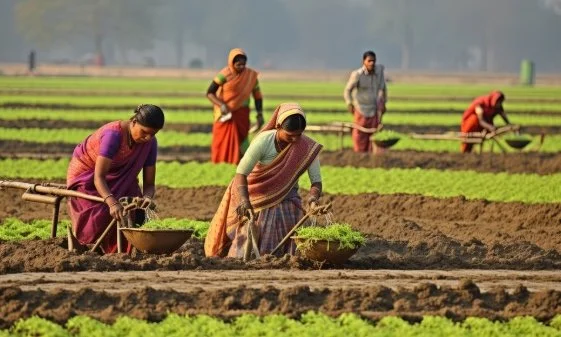More Borrowers Fall Behind on Microfinance Loans in Rural India
Official Report Reveals Sharp Rise in Overdue Microfinance Loans
October 11, 2025
A new report by Sa-Dhan, a body that monitors microfinance in India, shows that more people, especially in rural areas, are falling behind on small loan payments, indicating that many low-income families are struggling to manage their daily finances.
The report, according to The Hindu, says that the share of loans that were over 30 days late rose to 6.2 percent in 2024-25, up from 2.1 percent the year before. Loans that were overdue by more than 90 days also went up from 1.6 percent to 4.8 percent.
The people behind these numbers are mostly women managing tiny trades and homes. They borrow to buy goats, sewing machines, stock for roadside stalls, or to pay school fees when crops fail. A missed instalment usually means a bigger story underneath. It could be a sick child, a wedding expense, a few weeks of no rain, or a factory job lost in the city. The rise from 2 percent to more than 6 percent means millions of such small shocks have added up.
Bihar had the most worrying numbers. It had microfinance loans worth about 577.12 billion (57,712 crore) rupees at the end of March 2025, and 7.2 percent of those were overdue by more than 30 days. Around 4.6 percent of its loans were overdue by more than 90 days, which is the level at which a loan is normally considered a bad debt.
Let’s say, a house in rural Bihar where two members used to migrate to work in construction. If one stays back or finds fewer days of work, the household budget shrinks. The loan that once felt manageable now eats into food money. Multiply that across villages and a pattern emerges, wherein incomes are stretched thinner, savings are gone and people are borrowing to survive rather than to grow.
The report also found that rural borrowers had more unpaid loans than those in towns or cities. Out of 2.3 trillion (2.3 lakh crore) rupees of loans given to rural customers, 6.4 percent were overdue by over 30 days, while for semi-urban and urban borrowers, the shares were 6.1 percent and 6 percent. For loans overdue by more than 90 days, the share was 3.7 percent for rural borrowers and 3.2 percent for semi-urban and urban ones.
These numbers show that small borrowers are finding it tougher to keep up with their payments. A woman who runs a small tailoring shop in a village may have taken a loan to buy fabric and a sewing machine. If her customers delay paying her or if prices of daily items rise, she might miss a few instalments. Over time, those delays pile up. The same could happen to a man selling snacks from a pushcart who took a small loan to restock ingredients. If his sales dip for a few weeks, his repayments become harder to manage.
Microfinance loans were meant to help such people build a stable income, but these figures tell us that many are struggling to make that work. Families often depend on these loans to bridge gaps in income between crop seasons or to handle small emergencies. When too many of them fall behind, it means that their earnings are not enough to meet even basic expenses and repayments.
This is a sign that household finances in many parts of India are under pressure. Prices have risen, but incomes, especially in rural areas, have not grown at the same pace. People may still be borrowing, but they are using loans to keep life running instead of using them to grow their small businesses. Over time, this creates a cycle of debt that becomes harder to break.
The report suggests that while credit has spread deep into rural India, income security has not kept pace. So, while the economy may look strong in official charts, these overdue loans whisper another truth, that growth has not reached the ground evenly.
You have just read a News Briefing by Newsreel Asia, written to cut through the noise and present a single story for the day that matters to you. Certain briefings, based on media reports, seek to keep readers informed about events across India, others offer a perspective rooted in humanitarian concerns and some provide our own exclusive reporting. We encourage you to read the News Briefing each day. Our objective is to help you become not just an informed citizen, but an engaged and responsible one.

